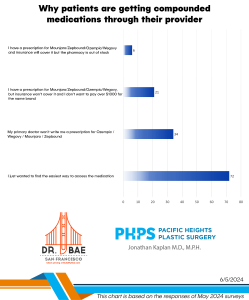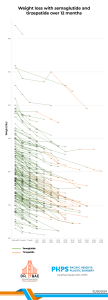 Competition has always been fierce in healthcare and it’s only getting more competitive these days. The reasons are plentiful and a subject for another blog post. But the important thing is how to differentiate yourself. Which of course is where customer service comes in. And great customer service begins even before the patient has any formal contact with the office, practice or facility.
Competition has always been fierce in healthcare and it’s only getting more competitive these days. The reasons are plentiful and a subject for another blog post. But the important thing is how to differentiate yourself. Which of course is where customer service comes in. And great customer service begins even before the patient has any formal contact with the office, practice or facility.
Responsive websites
That means having a thoroughly accessible and educational website that looks good on both desktop and mobile devices. Often times this may be the consumer’s first experience with your brand. So you have to make sure your site is easy to navigate and actually works. There’s nothing more frustrating to the consumer than seeing a heading for the procedure they’re interested in but unable to click through on their phone or similar mobile device because the mobile version of your site isn’t optimized.
Unfortunately that means you have to spend money on a responsive site. That’s a website that looks good on any device. Words like “responsive” and “mobile optimization” aren’t buzzwords you typically associate with customer service. But don’t kid yourself, they’re all ingredients in the same recipe!

They wanna know the cost!
While cost isn’t the only pain point, it is the ultimate pain point! That’s to say that yes, board certification and experience are important, but ultimately the patient is going to need to know, and want to know, their out of pocket cost. And, remember, giving the customer what they want is an example of good customer service. So why not make it easy for them to determine cost and generate a lead in the process?!
That’s why a Price Estimator on your website is so great. It allows the consumer to check pricing in an automated way but only after they provide their contact info. That information is passed along to the doctor as a lead and the patient gets the immediate gratification of pricing data. But what do you do with that lead?
Follow up quickly and mention accolades
There are multiple sources that suggest there’s a better chance a lead will turn into an actual patient if the office follows up on the lead within 5 minutes. So if the office staff receives a lead through a Price Estimator on their website, they should follow up ASAP. Or if someone calls asking about price, then the office staff should use the accompanying Price Estimator app to provide pricing over the phone.
All of these leads can also be added to a database for future email marketing. If the office has a monthly email newsletter, this will allow for 12 additional touchpoints throughout the year.
This is all in an effort to provide good customer service veiled as price transparency. But it’s also a great opportunity to tell the potential patient why they’ll get great value for that cost. If there are any accolades the office or doctor has recently received to support that value, this is the time to tell the caller. For example, Dr. Kaplan of Pacific Heights Plastic Surgery was recently named Best Cosmetic Surgeon by SF Weekly, a local tabloid. But it’s more than a reflection of him.
Even if the doctor was the greatest on earth, that wouldn’t make up for incompetent staff. So when community members vote on “the best of,” they’re not thinking only of the doctor. They’re thinking of their entire personal experience with the office or what they’ve heard secondhand. And that requires great customer service by the entire staff, not just the doctor, to generate that sort of buzz.
Again, once you have the consumer on the phone, this is the office staff’s chance to educate the patient about a procedure-of-interest, the price and the value behind that price.

Education can also come in the form of social media.
Education comes in many forms now and social media is a growing source of potentially very good, very raw education. Social media offers live or almost-live recordings of surgery. If the patient is watching surgery on Snapchat and/or Instagram Stories, they can actually ask questions during the procedure! But even by osmosis, they’re learning a great deal. And hopefully, this will result in a consultation.
Day of the consult
When the patient arrives, quickly offer them something to drink (water, tea or coffee). Of course any visit to the doctor requires the completion of intake paperwork. Always attempt to send the patient their paperwork via email beforehand and they can complete, email or bring it in at the time consult. This shortens their in-office wait time significantly.
Then it’s up to the doctor to avoid making the patient wait. The consult should be thorough, stopping frequently to ensure the patient has a chance to answer questions.
When it comes to injectables like fillers, offer the patient a dental block to minimize their pain. If they are receiving non-surgical treatments that day, consider charging the patient in the exam room with a mobile payment processor after their procedure. This is for privacy reasons so the patient doesn’t have to pay at the front desk with other patients listening in the waiting room.
If they are considering a surgical procedure, bring the patient to a separate part of the office to meet with a patient care coordinator. This gives the patient the opportunity to ask difficult questions without the doctor present. Hopefully this will lead to the patient booking surgery.

Day of surgery and post-op communication
While not every doctor has access to their own in-office operating room, this does elevate the surgical experience to a VIP experience. Studies also show that patients that undergo surgery from a doctor that operates with the same staff have fewer postop complications. And if avoiding postop complications isn’t considered good customer service, I don’t know what is!
Another huge patient satisfier after surgery is providing them with all of the medications they need. That doesn’t mean all of the prescriptions they need but all of the actual medications. Depending on the state, it’s ok to provide the patient with filled prescriptions for pain, anti-nausea and any scar creams. This can be included in the cost of the procedure. The value here is the ability for the patient to go home directly after surgery because they have their meds and don’t have to stop at the pharmacy.
Last, but not least, one of the best examples of customer service is for the doctor to call surgical patients at home the evening following the procedure. Not only does this give the doctor the opportunity to check on the patient’s well-being, but also allows the patient to ask additional questions. Now that the patient has the doctor’s phone number, they can text or call the doctor with any follow up concerns so they don’t go looking for answers online or at an ER.
Customer service is a never-ending task but well worth happy patients and thank you cards like the ones above.
Click here for the original blog post written by Dr. Kaplan for BuildMyBod.






